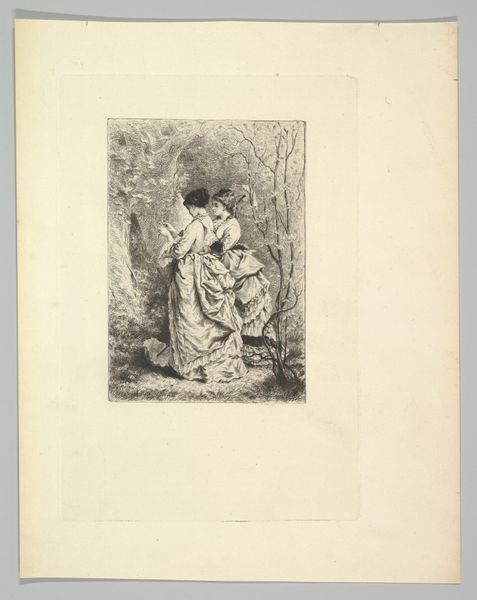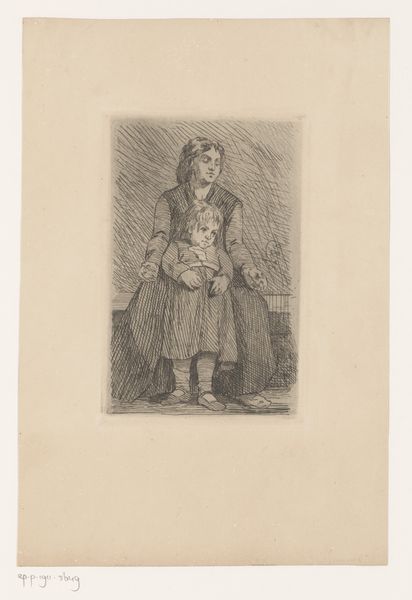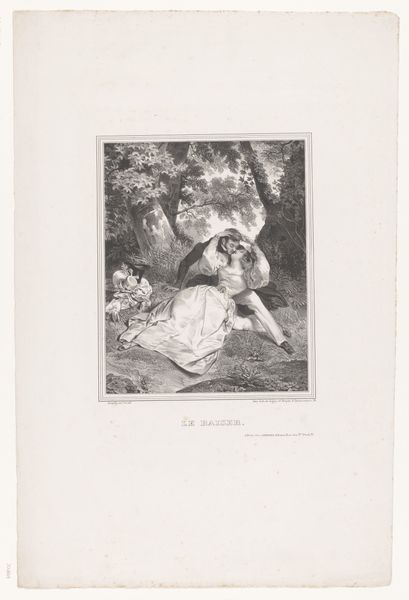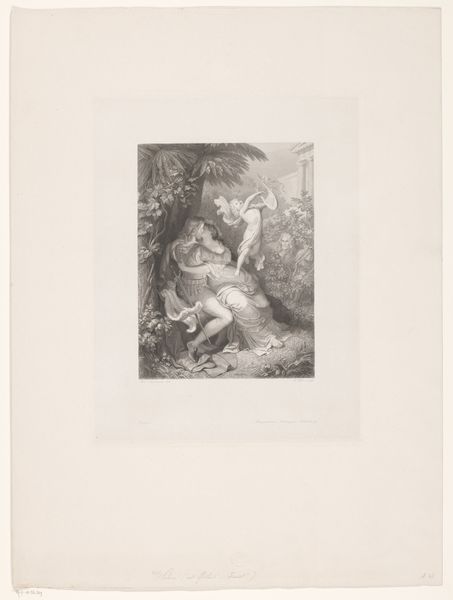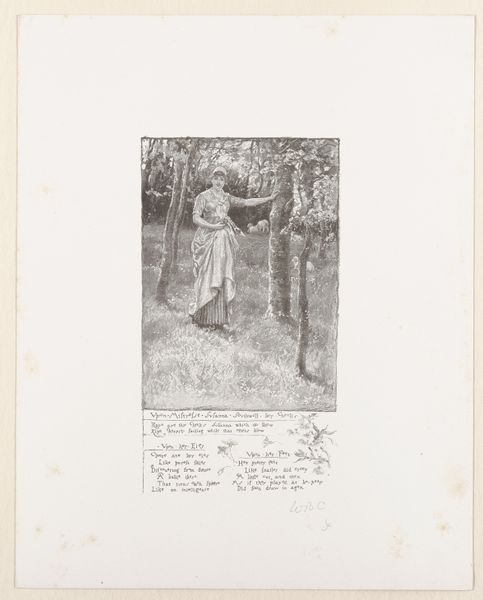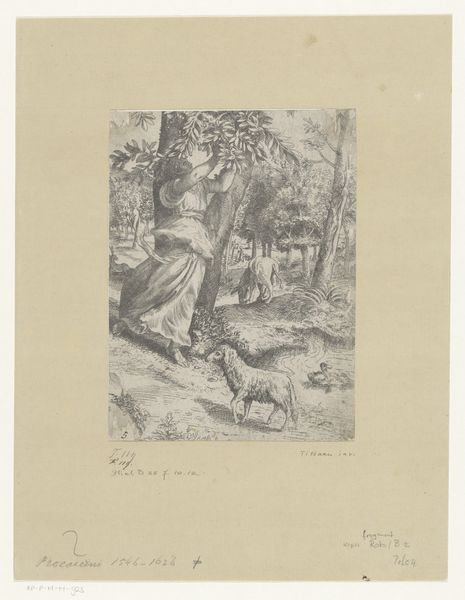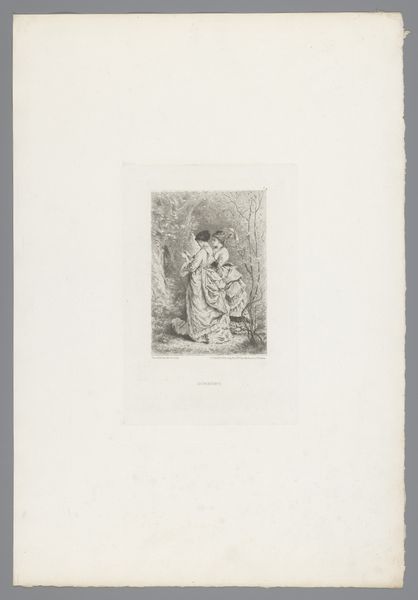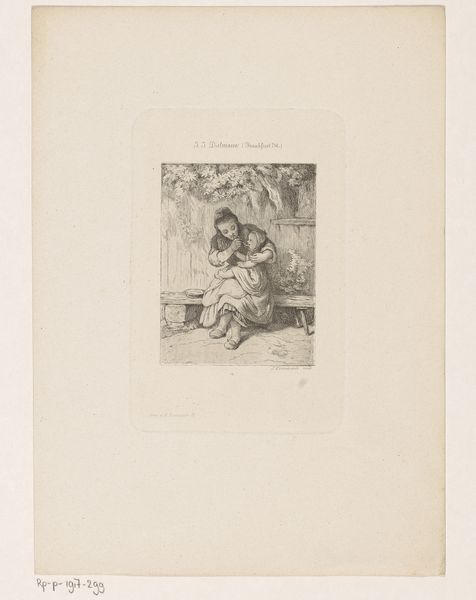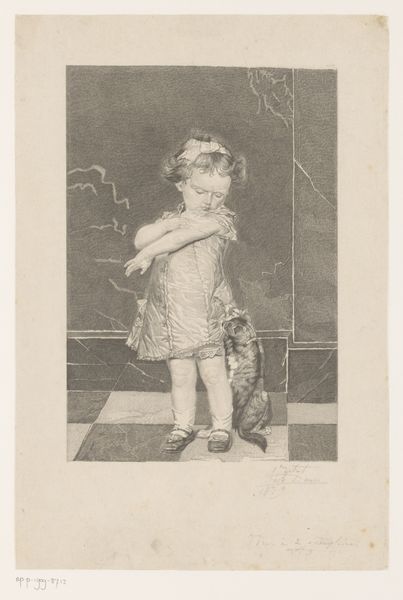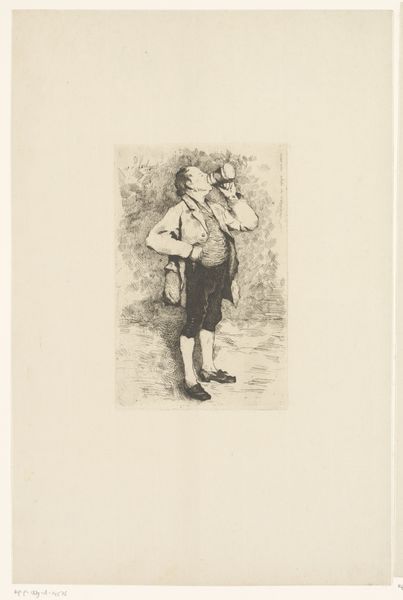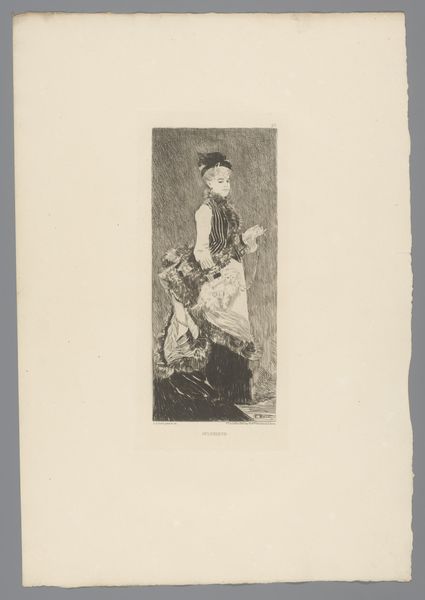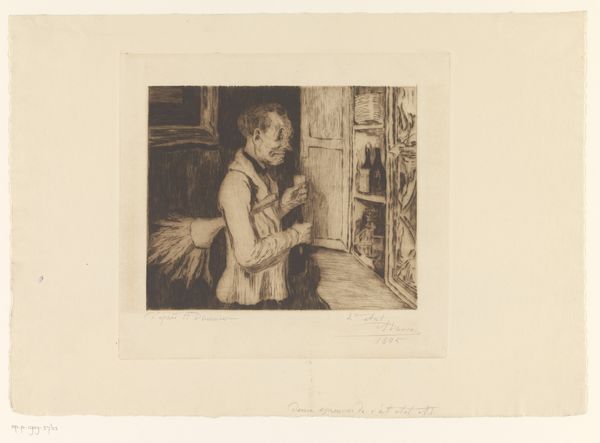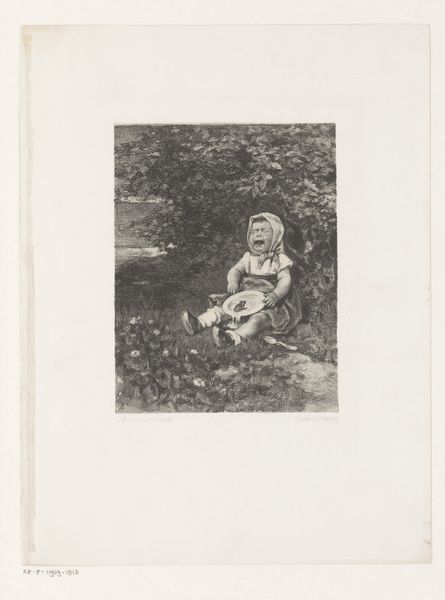
print, etching, engraving
#
portrait
# print
#
etching
#
genre-painting
#
engraving
#
realism
Dimensions: height 240 mm, width 160 mm
Copyright: Rijks Museum: Open Domain
Editor: This is "Kind in het bos," created by Francesco Paolo Michetti between 1861 and 1913. It's an etching, an engraving, a print—a confluence of mediums depicting a child seemingly lost in thought amidst a dense, perhaps slightly threatening, forest. The somber tones really grab you. What symbols are at play here? Curator: Notice how the forest presses in on the child. Trees, throughout history, have represented the subconscious, the wild unknown. In folklore, forests are often places of danger, where one's true nature is tested, think of fairytales such as Hansel and Gretel. What is the emotional impact of placing the child so centrally, yet so constrained within this symbolic space? Editor: It does feel like a visual representation of innocence confronting the complexities, even the dangers, of the adult world. Curator: Exactly. And the child carries a basket. Is it for gathering? For offering? Consider how this simple object can transform the narrative. What could the basket and its potential contents symbolize? This could touch upon the idea of societal expectations being imposed on the innocence of childhood. Editor: I see what you mean. It’s not just about being in nature, but about purpose, and what's expected of us. Curator: And, of course, genre paintings often reflected social values and realities. Considering the period, how does Michetti perhaps comment on childhood, labor, and societal roles through the symbols present? Editor: So, by looking at the forest as a psychological space and the basket as a burden, we can interpret the print not just as a portrait, but as a statement about childhood itself. Thank you for guiding me! Curator: Indeed, every element contributes to a layered, emotionally charged visual text. It reminds us to explore beneath the surface when understanding art.
Comments
No comments
Be the first to comment and join the conversation on the ultimate creative platform.

